Kelly Jensen's Blog, page 111
June 18, 2014
Covers Through the Years: The Golden Compass
Long-time readers of Stacked may remember our inaugural post where we discussed our favorite books. Easily occupying my top spot is The Golden Compass by Philip Pullman, which meant a great deal to me when I first read it as a young teen and still holds immense power over me today. It continues to be popular and highly-regarded among today’s readers and critics, meaning that its cover has gone through several incarnations since I first read it. I thought it might be interesting to review these various covers through time as Kelly has done for other books and authors previously. The His Dark Materials trilogy, beginning with The Golden Compass, is a curious case study for me, as a battle has raged since its publication over the “proper” age of its audience, ranging from middle grade to adult.
The book was first published as Northern Lights in the United Kingdom in 1995 by Scholastic. The US edition, retitled The Golden Compass, followed in 1996 from Alfred A. Knopf. For this post, I’ll focus mostly on the US covers throughout the years since then – the covers I’ve come across in my own reading and collecting. Otherwise, the scope would be too large for me to cover adequately, especially since the book has since been published in many more countries.
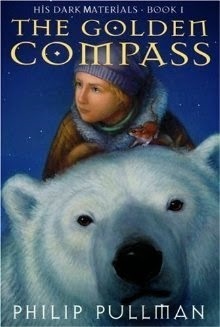
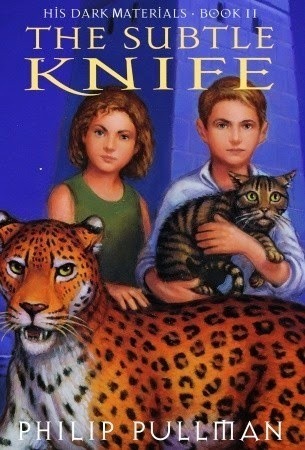

Here are the original US hardback covers of all three books in the trilogy. One of these things is not like the others. While the first two books were published very close to each other (1996 and 1997), the third wasn’t published until 2000, three years later (not a huge wait, but notable considering the small gap between the other two). This, including the tremendous acclaim for the first two novels, probably accounts for the design change for the third book, which is much more sophisticated and expensive to produce (if you can’t tell from the image, the gold portion is a cut-out).
I believe the series was always marketed to youth in the US, but the delineation between middle grade and young adult wasn’t as clear then (some would claim it’s not even clear now). It wasn’t unusual, at least to my recollection, to find covers featuring illustrated characters on novels aimed for teens in the mid-90s. These days, you usually find illustrated covers on middle grade novels, not YA novels. Our 2014 eyes would probably peg these books as middle grade, which is accurate – Amazon lists the suggested age as 10 and up, and the first two were in my middle school library (I assume the third made it in when it was published). The books are also meant for teens (and appeal to them), but most teens of today would probably pass these by as too juvenile.
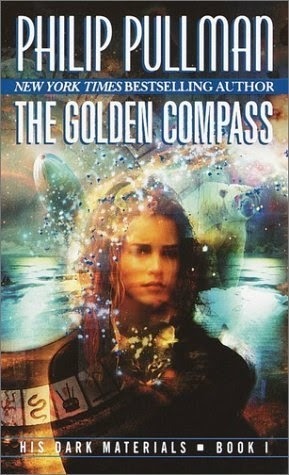
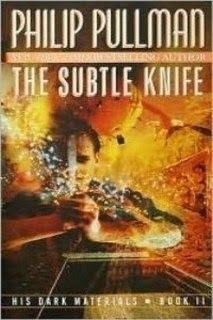
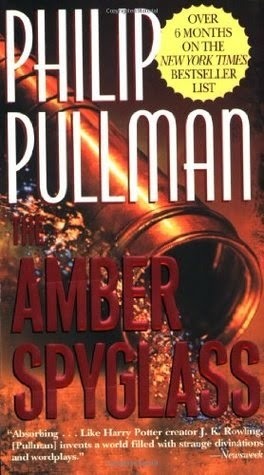
These paperback versions were published in 1997, 1998, and 2001 by Del Rey. Again, the third book looks different. I couldn’t find an image of the third book that matches the first two more closely, so I’m assuming there isn’t one. These do look like they’re geared for a slightly older audience, but they’re still dated.
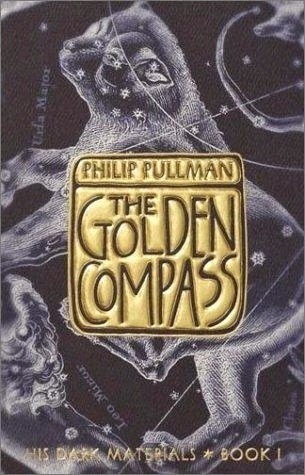
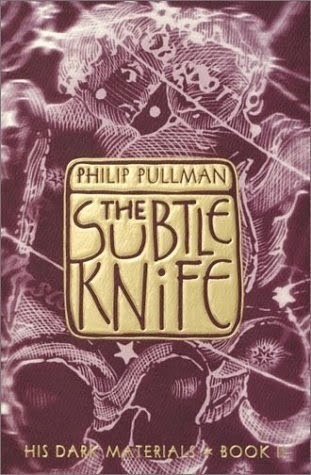
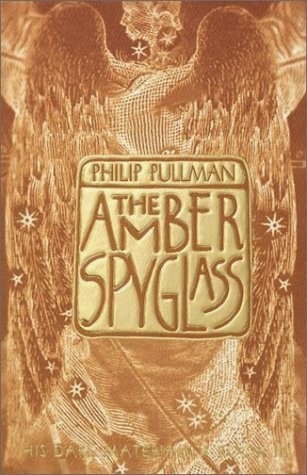
In 2001, Alfred A. Knopf gave us these lovely paperback editions of all three novels. With the images of the daemons and children in the background, I think they still demonstrate that they’re for teens (though perhaps older teens), but they look more modern and a bit more sophisticated. The gold foil portion in the center is raised and gives a deluxe feel to the covers. Also worth noting, this is the first time all three books completely match each other.

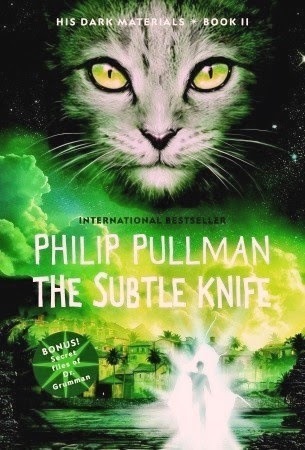
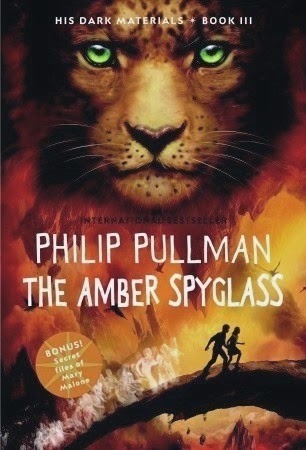
Yearling published a few more paperback editions in 2001 (the first two) and 2003 (the third). These are definitely geared for the younger end of the target audience (10-12). They actually remind me a little of the new Animorphs covers. I’m not a huge fan of them personally, but if it widens the audience, I’m for it. These are the paperbacks currently in print and the ones you’re prompted to purchase when you visit an online retailer such as Amazon or Barnes and Noble. They’re also the first editions with bonus content. Since these came out around the same time as the Knopf versions above, I think they’re interesting to compare – they’re each going for very different readers.
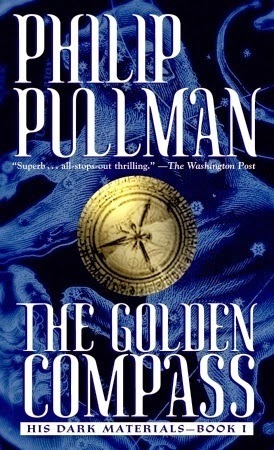
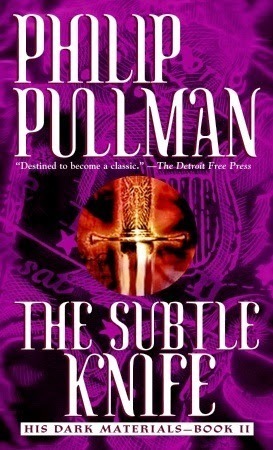
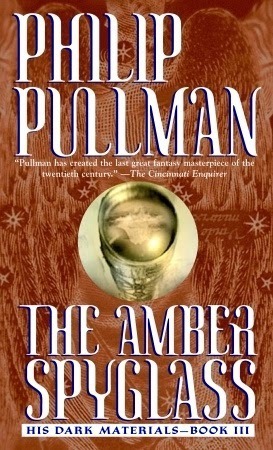
Laurel Leaf released these mass market versions in 2003. These are unrecognizable from adult mass market fantasy titles. I like the design; it’s above average for mass market books. The image doesn’t clearly show that the middle illustrations are actually cut-outs, showing through from the pages behind. It seems the publishers were going for as broad an audience as possible with these, if they weren’t marketing to adults specifically. I own these versions and I’m pretty sure I purchased them from the adult section of the bookstore.



In 2006 (and 2007), we get the deluxe tenth anniversary editions from Knopf. They’re lovely and very appealing for adults. These are covers to attract established fans and collectors. They also have a tremendous amount of new material, including new illustrations, spot art from Pullman, and a lot of “archival” documents from the characters’ lives. They’re hardback with a deckle edge and a ribbon bookmark. Note that the same background images have been used in three editions so far (paperbacks of 2001, mass markets of 2003, and these).
These deluxe editions are no longer in print – I couldn’t find them to purchase from any usual retailer. If you want a hardback edition of any book in the series, you’re pretty much out of luck unless you want to buy used or from a re-seller. The only editions (of any format) currently in print that I could find were the Yearling paperbacks from 2001/2003. I don’t own those, but they appear to be mass market rather than full-size trade versions. (I’m able to purchase the original 1996 hardcover from Ingram, but they have limited quantities and I suspect the books are leftovers from many years ago.)
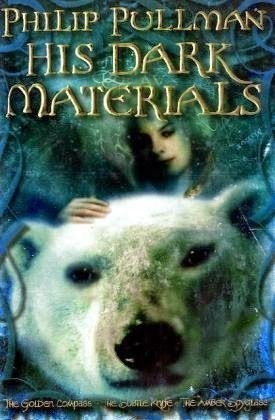
A US omnibus edition was published in 2007 by Knopf prior to the release of the Golden Compass film adaptation (which isn’t a good adaptation, but I like it anyway). It’s….a little retro, in my opinion. This is as close as I could find to a US movie tie-in edition, which I don’t normally care for anyway. I do like the cover’s colors, which are reminiscent of the aurora borealis, an important part of the plot.
Selected UK Editions
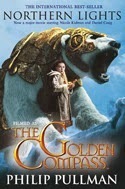
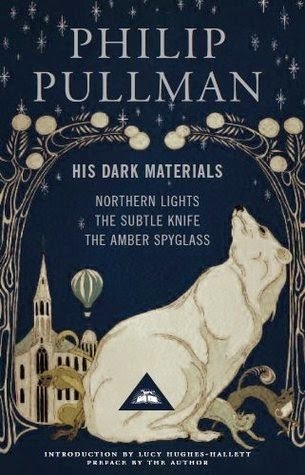
Here we get a true movie tie-in edition, though it’s from Scholastic UK. It looks a bit like a movie poster, which I suppose is the point. The second image above is a 2011 omnibus edition from Everyman’s Library, another UK publisher. It’s so different from anything else, which is part of why I like it. I think that’s supposed to be Iorek on the cover, but it looks more like a wolf than a bear, so I’m not sure.
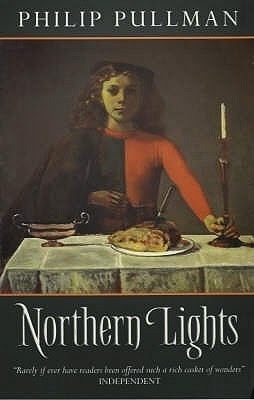
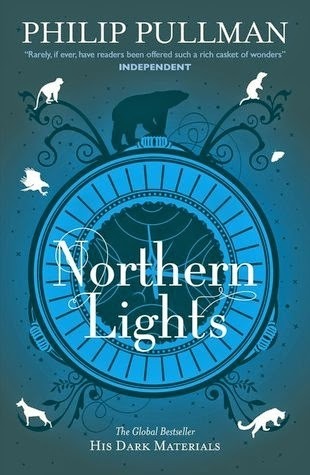
The first picture above is specifically called an “adult edition.” It’s from Scholastic Press (UK), published in 2001. I think it’s pretty terrible. I’m not really sure what they were going for. None of the imagery seems relevant to the story at all. It seems like it might be a historical painting, but I wouldn’t be able to place it. (Anyone have any ideas?) I’m not a fan, but I do find it interesting that an adult version, marketed as such, exists, especially since there are plenty of other versions out there that don’t scream “I’m reading a kids’ book!”
The second cover is a Scholastic (UK) paperback from 2011. I think it’s lovely and all ages friendly in its appeal. When I visited London last year, I picked up a copy of this version.
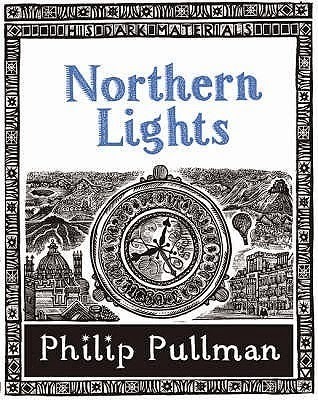

These are images from a special Scholastic (UK) edition published in 2008. I own this one, which comes in a lovely blue and silver box (shiny!) and looks even more deluxe than the US special edition.
Selected International Editions
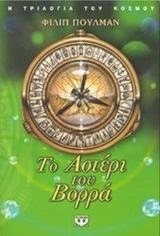
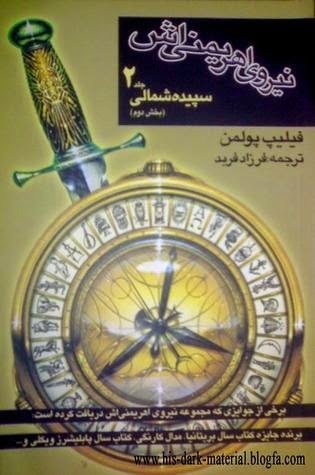
Most of the international versions actually use a lot of the same imagery as the UK and US versions. The image of the alethiometer reflected in the above covers is the one used by the initial paperback UK version. The background and typefaces are different, but the basic design is the same. The first cover is Greek and the second is Persian. You’ll find many other international covers that look very similar to these.
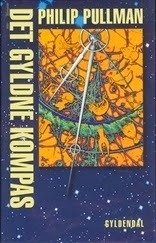
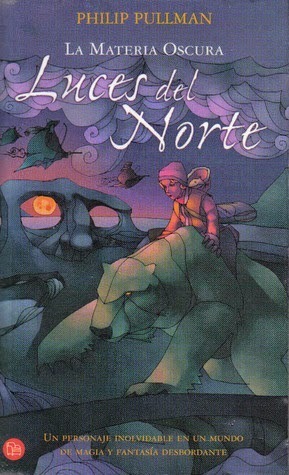
Here are two very different international versions. The first is the Danish cover, which takes the title literally and puts an actual compass on it. The second is the Spanish cover, which takes the common image of Lyra on Iorek, but draws it in a different style.
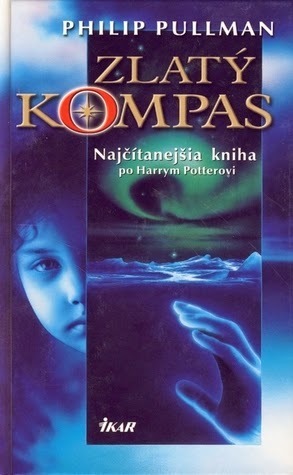
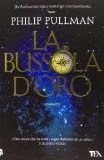
These are the Slovak and Italian versions, both nice in their own way, though I really like the Italian cover (it might have something to do with the language as well). I think it’s also interesting to consider which countries opted to translate the original UK title (Northern Lights) and which ones chose to translate the US title (The Golden Compass).






 Related StoriesGraduation Day by Joelle CharbonneauComplicit by Stephanie KuehnMicrotrends in YA Fiction
Related StoriesGraduation Day by Joelle CharbonneauComplicit by Stephanie KuehnMicrotrends in YA Fiction
The book was first published as Northern Lights in the United Kingdom in 1995 by Scholastic. The US edition, retitled The Golden Compass, followed in 1996 from Alfred A. Knopf. For this post, I’ll focus mostly on the US covers throughout the years since then – the covers I’ve come across in my own reading and collecting. Otherwise, the scope would be too large for me to cover adequately, especially since the book has since been published in many more countries.



Here are the original US hardback covers of all three books in the trilogy. One of these things is not like the others. While the first two books were published very close to each other (1996 and 1997), the third wasn’t published until 2000, three years later (not a huge wait, but notable considering the small gap between the other two). This, including the tremendous acclaim for the first two novels, probably accounts for the design change for the third book, which is much more sophisticated and expensive to produce (if you can’t tell from the image, the gold portion is a cut-out).
I believe the series was always marketed to youth in the US, but the delineation between middle grade and young adult wasn’t as clear then (some would claim it’s not even clear now). It wasn’t unusual, at least to my recollection, to find covers featuring illustrated characters on novels aimed for teens in the mid-90s. These days, you usually find illustrated covers on middle grade novels, not YA novels. Our 2014 eyes would probably peg these books as middle grade, which is accurate – Amazon lists the suggested age as 10 and up, and the first two were in my middle school library (I assume the third made it in when it was published). The books are also meant for teens (and appeal to them), but most teens of today would probably pass these by as too juvenile.



These paperback versions were published in 1997, 1998, and 2001 by Del Rey. Again, the third book looks different. I couldn’t find an image of the third book that matches the first two more closely, so I’m assuming there isn’t one. These do look like they’re geared for a slightly older audience, but they’re still dated.



In 2001, Alfred A. Knopf gave us these lovely paperback editions of all three novels. With the images of the daemons and children in the background, I think they still demonstrate that they’re for teens (though perhaps older teens), but they look more modern and a bit more sophisticated. The gold foil portion in the center is raised and gives a deluxe feel to the covers. Also worth noting, this is the first time all three books completely match each other.



Yearling published a few more paperback editions in 2001 (the first two) and 2003 (the third). These are definitely geared for the younger end of the target audience (10-12). They actually remind me a little of the new Animorphs covers. I’m not a huge fan of them personally, but if it widens the audience, I’m for it. These are the paperbacks currently in print and the ones you’re prompted to purchase when you visit an online retailer such as Amazon or Barnes and Noble. They’re also the first editions with bonus content. Since these came out around the same time as the Knopf versions above, I think they’re interesting to compare – they’re each going for very different readers.



Laurel Leaf released these mass market versions in 2003. These are unrecognizable from adult mass market fantasy titles. I like the design; it’s above average for mass market books. The image doesn’t clearly show that the middle illustrations are actually cut-outs, showing through from the pages behind. It seems the publishers were going for as broad an audience as possible with these, if they weren’t marketing to adults specifically. I own these versions and I’m pretty sure I purchased them from the adult section of the bookstore.



In 2006 (and 2007), we get the deluxe tenth anniversary editions from Knopf. They’re lovely and very appealing for adults. These are covers to attract established fans and collectors. They also have a tremendous amount of new material, including new illustrations, spot art from Pullman, and a lot of “archival” documents from the characters’ lives. They’re hardback with a deckle edge and a ribbon bookmark. Note that the same background images have been used in three editions so far (paperbacks of 2001, mass markets of 2003, and these).
These deluxe editions are no longer in print – I couldn’t find them to purchase from any usual retailer. If you want a hardback edition of any book in the series, you’re pretty much out of luck unless you want to buy used or from a re-seller. The only editions (of any format) currently in print that I could find were the Yearling paperbacks from 2001/2003. I don’t own those, but they appear to be mass market rather than full-size trade versions. (I’m able to purchase the original 1996 hardcover from Ingram, but they have limited quantities and I suspect the books are leftovers from many years ago.)

A US omnibus edition was published in 2007 by Knopf prior to the release of the Golden Compass film adaptation (which isn’t a good adaptation, but I like it anyway). It’s….a little retro, in my opinion. This is as close as I could find to a US movie tie-in edition, which I don’t normally care for anyway. I do like the cover’s colors, which are reminiscent of the aurora borealis, an important part of the plot.
Selected UK Editions


Here we get a true movie tie-in edition, though it’s from Scholastic UK. It looks a bit like a movie poster, which I suppose is the point. The second image above is a 2011 omnibus edition from Everyman’s Library, another UK publisher. It’s so different from anything else, which is part of why I like it. I think that’s supposed to be Iorek on the cover, but it looks more like a wolf than a bear, so I’m not sure.


The first picture above is specifically called an “adult edition.” It’s from Scholastic Press (UK), published in 2001. I think it’s pretty terrible. I’m not really sure what they were going for. None of the imagery seems relevant to the story at all. It seems like it might be a historical painting, but I wouldn’t be able to place it. (Anyone have any ideas?) I’m not a fan, but I do find it interesting that an adult version, marketed as such, exists, especially since there are plenty of other versions out there that don’t scream “I’m reading a kids’ book!”
The second cover is a Scholastic (UK) paperback from 2011. I think it’s lovely and all ages friendly in its appeal. When I visited London last year, I picked up a copy of this version.


These are images from a special Scholastic (UK) edition published in 2008. I own this one, which comes in a lovely blue and silver box (shiny!) and looks even more deluxe than the US special edition.
Selected International Editions


Most of the international versions actually use a lot of the same imagery as the UK and US versions. The image of the alethiometer reflected in the above covers is the one used by the initial paperback UK version. The background and typefaces are different, but the basic design is the same. The first cover is Greek and the second is Persian. You’ll find many other international covers that look very similar to these.


Here are two very different international versions. The first is the Danish cover, which takes the title literally and puts an actual compass on it. The second is the Spanish cover, which takes the common image of Lyra on Iorek, but draws it in a different style.


These are the Slovak and Italian versions, both nice in their own way, though I really like the Italian cover (it might have something to do with the language as well). I think it’s also interesting to consider which countries opted to translate the original UK title (Northern Lights) and which ones chose to translate the US title (The Golden Compass).







 Related StoriesGraduation Day by Joelle CharbonneauComplicit by Stephanie KuehnMicrotrends in YA Fiction
Related StoriesGraduation Day by Joelle CharbonneauComplicit by Stephanie KuehnMicrotrends in YA Fiction
Published on June 18, 2014 22:00
June 17, 2014
Graduation Day by Joelle Charbonneau
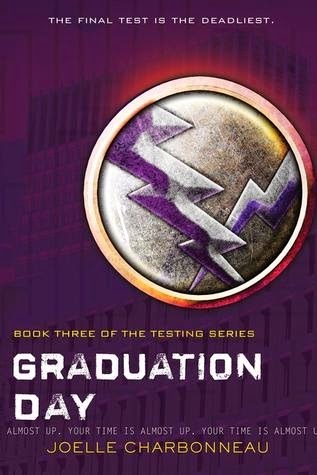 Graduation Day
is Joelle Charbonneau’s conclusion to her trilogy that began with
The Testing
and continued with
Independent Study
, and I’m disappointed I didn’t enjoy it more. The Testing and Independent Study were both exciting, edge-of-your-seat page-turners, full of action and plot twists. Graduation Day felt lackluster in both action and twists – not enough action and a few too many twists.
Graduation Day
is Joelle Charbonneau’s conclusion to her trilogy that began with
The Testing
and continued with
Independent Study
, and I’m disappointed I didn’t enjoy it more. The Testing and Independent Study were both exciting, edge-of-your-seat page-turners, full of action and plot twists. Graduation Day felt lackluster in both action and twists – not enough action and a few too many twists. After the events of Independent Study, Cia is determined to get rid of the Testing once and for all. She can’t do it alone – she must partner with some of her classmates, including those who killed other teens during the events of the first book. She’s also asked to carry out a special assignment by the president, who claims that she, too, wants to abolish the Testing. But what are her true goals? Who can really be trusted?
I think what I missed most were the actual tests that pervaded the first two novels. They were clever and cruel and tremendous fun to read about. The tests were where Charbonneau’s imagination was at its best, and they were also a great way for us to get a feel for how characters behave in very tough situations. Graduation Day sacrifices these tests in favor of a more straightforward plot where Cia investigates who really wants to get rid of the Testing and what each person’s motives truly are. I say straightforward, but that’s really only true initially. By the end of the story, we’ve gone through at least three double-crosses, and I was never quite able to wrap my mind around who did what and why. It’s more than a little muddled and grew tiresome after a while.
Beyond my frustrations with the plot, I felt like many of Cia’s actions were out of character. I can understand that she would resort to more drastic measures here than she would have in the first book, but the way she reacts to certain events, the things she says – they often seemed a little off. I can’t go into much detail without revealing major plot points, but what I can say is that Cia didn’t always resemble herself from the previous two books.
Whereas I read the first two novels almost straight through in one or two sittings, this one took me several days, and I never counted down the minutes until I could pick it up again. The final confrontation, which I was hoping would be a big showdown with more secrets revealed, instead felt anticlimactic. This is obviously a must-read for diehard fans of the first two novels, but it’s not a completely satisfying conclusion, and I was left feeling a bit let down.
Review copy received from the publisher. Graduation Day is available now.







 Related StoriesComplicit by Stephanie KuehnMicrotrends in YA FictionWhat I'm Reading Now
Related StoriesComplicit by Stephanie KuehnMicrotrends in YA FictionWhat I'm Reading Now
Published on June 17, 2014 22:00
June 16, 2014
Complicit by Stephanie Kuehn
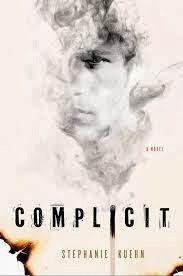 Jamie Henry's crazy sister Cate is coming home.
Jamie Henry's crazy sister Cate is coming home.She's spent the last two years behind bars for starting a fire at a barn that not only killed horses, but it severely harmed one of the local girls. Everyone suspects she did it because she didn't want that girl to be involved with the boy she had a crush on.
But what worries Jamie isn't just that she's coming home (and really, she's 19, she legally doesn't need to "come home"). It's that Cate is coming back to see him.
Because Cate has to set the record straight with her brother.
Stephanie Kuehn's Complicit is a dark psychological thriller that takes everything she did so well in Charm & Strange and amps it up even more. Be warned that everything from here on out is spoiler.
The first thing you should know about Kuehn's novel is that you know pretty quickly that things aren't what they seem. That Jamie, our narrator, isn't reliable. More than that, you know what he's said about Cate and her connection to the barn fire might not be true. Perhaps you don't know how it's not true, but you know that it's not. So don't go into the book thinking that it's a mystery -- it's not.
Jamie and Cate are adopted. The two of them grew up under Angie and Malcolm's roof, where they live a pretty nice life. Their adoptive parents are wealthy, and the two of them have had every luxury available to them. The problem is that both of them are damaged from what happened before the adoption. Their mother, who was very young when she had Cate and not much older when she had Jamie, wasn't the world's most stable person herself. She was a bit of a drifter, did drugs, never had much money. Even though Jamie and Cate are siblings, they're not necessarily whole siblings; that's not known entirely, though. Their mother doesn't know who either of their fathers are, but the differences in their skin colors suggests that they don't share the same father. Cate's darker than Jamie.
They came to be adopted when their mother was killed at home by a gun shot. Angie and Malcolm came to adopt the siblings because they themselves had lost two children in a tragic accident and Cate and Jamie fit well enough into the holes of their deceased kids.
Both Cate and Jamie went to therapy because of the grief and trauma sustained in their early lives. Cate didn't take to the therapist in the same way Jamie did, and Jamie is upright in talking about how much his life has been impacted by Dr. Waverly. She's taught him methods of coping with his feelings, ones which can be diagnosed and those which can't be.
Two years ago, the day things came to light about Cate and the fire at the barn, Jamie began having awful problems with his hands. They stopped working.
Hearing that she was coming home -- coming for him -- made his hands stop working again.
Complicit is told in the present, as well as through flashbacks to the years prior to Cate's incarceration. Bit by bit, we're given flashes into the experiences Jamie had as an adoptee, as well as his experiences learning to make friends and control his emotional and mental states. It's tough though, especially knowing Cate's after him. And she's after him. She knows where he's at. She knows he's settling into a new relationship with a girl named Jenny. She knows that he needs to be talked to.
But in every moment where Cate approaches Jamie and where it seems as though she's finally going to get the chance to tell him what it is she needs to say, he passes out. This is beyond the hands not working. This is not knowing where he is or what he's doing and waking up unaware of what's happened except knowing that Cate had been there.
It's a defense mechanism.
Throughout the book, Jamie leads readers to believe that Cate needs to be avoided. That she's the embodiment of evil, of terrible decisions, of making poor choices that have forever impacted the family. The truth, though, isn't at all that simple.
Cate is not the bad seed.
Kuehn deftly weaves Jamie's reality against the reality of the world around him, and they don't match up. Those rifts are where the light shines into the story, and in many ways, it's Cate who digs her fingers into that rift and tears it open. Jamie distracts us though and he does so very well. He recalls something about the night with the barn fire. He was there. He was there to bury the evidence of his sister's wrongdoing. She'd borrowed his backpack, and when he saw it there that night, he grabbed it and buried it. He didn't want her to get in trouble and he wanted to do what it was he could to protect her. Except there was no need to protect her.
He was protecting himself.
The fire that night and the fires and burglaries happening around town now had nothing to do with Cate and everything to do with Jamie. The death of their mother years ago had nothing to do with some botched drug deal nor any other theory Jamie cooked up and presented to himself (and by extension, us). It was Jamie.
Complicit is a story about mental illness and about how sick someone can become mentally. It's about how far other people will go to protect those they love who can't be helped in the ways that they want to be helped. Kuehn offers us some words for what Jamie's experiencing, except through the eyes of Jamie, those diagnoses don't matter. What matters is that as readers, we're actually experiencing the illness right along with Jamie. We know almost immediately he's unreliable, and because of his defense mechanisms -- his hands not working, his ability to black out and not face the emotions and thoughts in front of him -- we're also left in the dark about some of what's going on in the present. But rather than being frustrating, it's a brilliant mimicking of exactly what's happening at that moment. We are right there with Jamie believing that Cate is a terrible, dark person, and we are right there with Jamie in his desperate search for understanding what happened to his mother, and we are right there with Jamie as he begins falling head over heels for Jenny. As the light breaks through though, we see why we should be worried about being there for him in each of those instances. When Cate reveals herself as not the "crazy" girl we've been led to believe she is, suddenly everything falls perfectly into place about the rest of the story. And yes, we do have to worry tremendously about the positive, fulfilling relationship Jamie's beginning with Jenny.
The threads of this story are woven together seamlessly. We know there's something going on, and we develop theories about them, but the what of it is never the point of the story. Instead, the point is the experience itself. What does it look like to be so mentally ill you don't know right from wrong? What does it feel like to be so sick that no amount of help can truly help you? Kuehn forces some really fascinating questions, too, about culpability, about guilt, and about shame in the story too. Why doesn't Jamie feel bad about the fire? How has he managed to block out shooting and killing his mother (which was accidental, probably, and for which he never took the fall nor the guilt)? What happens when those who love you do everything to protect you?
There are very smart allusions and layers built into the story, as well. Cate is a very smart girl, even though we don't get to see much of her on page, and what we do see of her is filtered through Jamie's perception. Complicit will appeal to readers who love psychological thrillers, and it's fast paced and engaging immediately. It will also appeal to readers who want a novel that forces them to reread, picking up new clues through the second and third readers. What does "The Owl and the Pussycat" really imply here? What about the books Cate has given Jamie? What about the Richard Wright novel? And, perhaps the thing that really cemented this as not just a good novel, but a GREAT one for me, what about that ending? It's not just a literal taking of the fall, but the burning of that photo which caused the fall. That was what made it clear to me just how sick Jamie was, and it made me want to turn back to page one and see where else those clear signs emerged that I missed the first time through. Without doubt, Kuehn's expertise in psychology only aids in crafting this story and informs not just Jamie's worldview, but also ours as readers.
Complicit leaves the reader with big questions, despite offering answers to the questions raised in the story itself. It's unsettling in many ways, but that discomfort is exactly what readers should walk away with. There's not a happy ending here, and it's possible to take aways here are scarier than they are comforting. This book will appeal to readers who want a story that hooks them immediately, and it'll appeal equally to readers who want a story that is going to challenge them. It's a sharp, contemporary/realistic thriller that delivers on every level, and Jamie's voice is memorable, haunting, and authentic.
Kuehn is an author to keep your eye on. She's only getting better.
Complicit will be available June 24 from St. Martin's Press. Review copy received from the publisher.







 Related StoriesFour Short(er) Contemporary YA Reviews: Jennifer Brown, Katrina Leno, Steve Brezenoff, and Amanda MacielThe Fever by Megan AbbottThe Klaatu Terminus by Pete Hautman
Related StoriesFour Short(er) Contemporary YA Reviews: Jennifer Brown, Katrina Leno, Steve Brezenoff, and Amanda MacielThe Fever by Megan AbbottThe Klaatu Terminus by Pete Hautman
Published on June 16, 2014 22:00
June 15, 2014
June Debut YA Novels

If you're keeping track of this year's debut young adult novels, here's a roundup of what's out in the month of June. As usual, the titles included here are actual debut novels, meaning that these aren't books that are first YA novels or first YA novels by authors who have published elsewhere under different names.
All descriptions are from WorldCat, unless otherwise noted. It's possible I've missed titles out this month -- and it's a pretty packed month for debuts -- so if there's something I've missed, let me know in the comments.
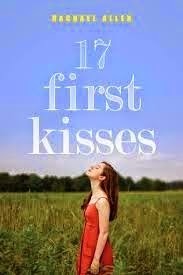
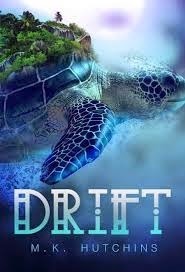
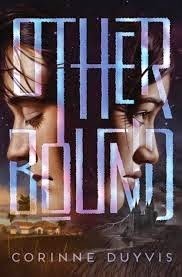
17 First Kisses by Rachael Allen: Claire Jenkins has finally found a boy worth kissing, but when she discovers that her best friend Megan also has feeling for him, Claire must decide what she is willing to risk to get what she wants.
Drift by M. K. Hutchins: To raise his family out of poverty, seventeen-year-old Tenjat joins a dangerous defense against the naga monsters that gnaw at his drifting island's foundation.
Otherbound by Corinne Duyvis: A seventeen-year-old boy finds that every time he closes his eyes, he is drawn into the body of a mute servant girl from another world--a world that is growing increasingly more dangerous, and where many things are not as they seem.
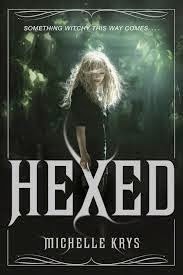

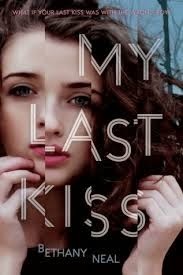
Hexed by Michelle Krys: Popular cheerleader Indigo Blackwood, sixteen, finds her perfect life threatened when Bishop, a tattooed, leather-clad stranger, tells her the family Bible just stolen from the attic of her mother's occult shop could mean the end to all witches, including, he says, Indigo herself.
I Become Shadow by Joe Shine: Abducted at age fourteen and trained by the F.A.T.E. Center to become a Shadow, guardian of a future leader, Ren Sharpe, now eighteen, is assigned to protect college science student Gareth Young, but with help from her secret love and fellow Shadow, Junie, she learns that F.A.T.E. itself is behind an attack on Gareth.
My Last Kiss by Bethany Neal: When a seventeen-year-old girl dies and can appear to her boyfriend, she learns that her death may not have been an accident, and must delve into her past to face all the decisions she made that led to her last kiss.

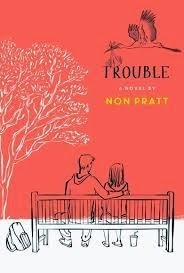
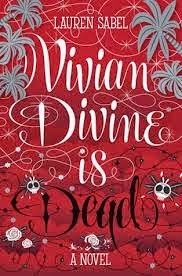
The Murder Complex by Lindsay Cummings: In a world where the murder rate is higher than the birth rate, fifteen-year-old Meadow, trained by her father to kill and survive in any situation, falls in love with Zephyr, a government assassin
Trouble by Non Pratt: When Aaron willingly signs on to be the pretend father of Hannah's unborn baby, he is looking for redemption from a past that has a stranglehold on him. Hannah, more simply, needs support in the absence of the real father, but she'll discover so much more.
Vivian Divine is Dead by Lauren Sabel: Teen celebrity Vivian Divine's movie-star mom has been murdered, her famous-director dad tried to kill himself, and her boyfriend is cheating on her. When a death threat arrives with her fan mail, Vivian has no choice but to go on the run to Mexico. She soon discovers, through, that her Oscar-nominated performance killing villains on-screen did nothing to prepare her for escaping a madman in real life. Vivian finds an ally in Nick. He is everything Hollywood boys are not-genuine, kind, and determined to see Vivian for who she really is. But even he, seems like he can't be trusted. Beat up, hungry, and more confused than ever about who she's running from, Vivian realizes this isn't the stuff bad TV movies are made of; this is material for a full-on blockbuster horror flick.

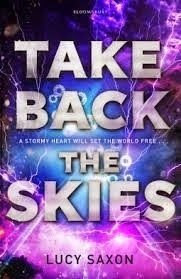
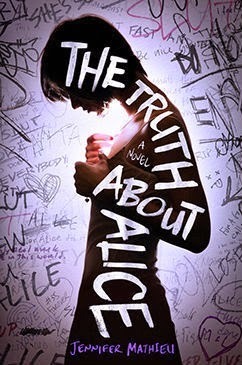
My Faire Lady by Laura Wettersten: After breaking up with her boyfriend, seventeen-year-old Rowena takes an out-of-town summer job at a Renaissance fair, but romantic entanglements soon follow.
Take Back the Skies by Lucy Saxon: To escape from a planned arranged marriage, teenaged Cat Hunter disguises herself as a boy and stows away on a smuggler's airship where she discovers a world of excitement and adventure.
The Truth About Alice by Jennifer Matthieu: When ugly rumors and lies about Alice Franklin start after one of the guys she allegedly slept with at a party dies in a car accident, questions about truth arise in her small town.
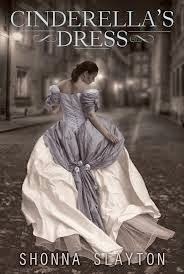
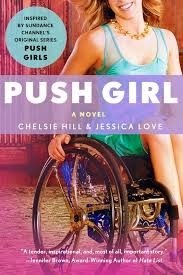
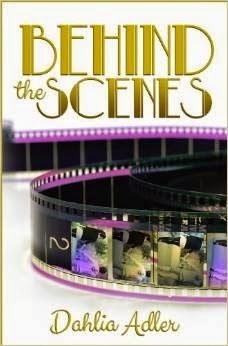
Cinderella's Dress by Shonna Slayton: Being seventeen during World War II is tough. Finding out you're the next keeper of the real Cinderella's dress is even tougher. Kate simply wants to create window displays at the department store where she's working, trying to help out with the war effort. But when long-lost relatives from Poland arrive with a steamer trunk they claim holds the Cinderella's dress, life gets complicated. Now, with a father missing in action, her new sweetheart shipped off to boot camp, and her great aunt losing her wits, Kate has to unravel the mystery before it's too late. After all, the descendants of the wicked stepsisters will stop at nothing to get what they think they deserve.
Push Girl by Chelsie Hill and Jessica Love: Kara, a high school junior, is popular with a great group of friends, an amazing boyfriend, and expectations of being Homecoming Queen until she leaves a party angry and wakes up in a hospital bed, paralized from the waist down, but as she is forced to adjust to her new physical reality, she also learns that her friends are not who they seemed to be.
Behind The Scenes by Dahlia Adler: High school senior Ally Duncan's best friend may be the Vanessa Park - star of TV's hottest new teen drama - but Ally's not interested in following in her BFF's Hollywood footsteps. In fact, the only thing Ally's ever really wanted is to go to Columbia and study abroad in Paris. But when her father's mounting medical bills threaten to stop her dream in its tracks, Ally nabs a position as Van's on-set assistant to get the cash she needs. Spending the extra time with Van turns out to be fun, and getting to know her sexy co-star Liam is an added bonus. But when the actors' publicist arranges for Van and Liam to "date" for the tabloids just after he and Ally share their first kiss, Ally will have to decide exactly what role she's capable of playing in their world of make believe. If she can't play by Hollywood's rules, she may lose her best friend, her dream future, and her first shot at love. (Description via Goodreads).


Essence by Lisa Ann O'Kane: Neutrality is the key to longevity. This motto has governed 17 year-old Autumn's life in the mid-21st century Centrist cult, which believes that expressing emotions leads to Essence drain and premature death. But Autumn's younger brother's death casts her faith into question. While sprinting through a park in violation of Centrist teachings, she encounters Ryder Stone, an Outsider who claims Essence drain is nothing more than a Centrist scare tactic. She agrees to join his Community, a utopia of adrenaline junkies living in the abandoned remains of Yosemite National Park. Autumn learns about sex, drugs, and living life to the fullest. But as she discovers dark secrets beneath the Community's perfect exterior, she realises that this illusion of paradise could be shattered.
The Girl Who Never Was by Skylar Dorset: On her seventeenth birthday, Selkie discovers that she is a half-faerie princess and that the mother she never knew wants to kill her.







 Related Stories"Summer" Reads, 2014 EditionMaking a List & Checking it Twice: Bucket Lists and More in YAMay Debut YA Novels
Related Stories"Summer" Reads, 2014 EditionMaking a List & Checking it Twice: Bucket Lists and More in YAMay Debut YA Novels
Published on June 15, 2014 22:00
It Happens Update

Just a quick post to say if you are interested in ordering It Happens, you can do that now through VOYA's online store. If you're a subscriber to their magazine or to Teacher Librarian, you get a 20% discount, and details on how to take advantage of that are on the site.
I put up a short excerpt last week, too, so you can get a taste of what the book looks like.
I haven't seen a finished copy yet -- I haven't seen anything since a digital proof a few months ago -- so I hope this means there will be some hitting my doorstep soon.
Editing to add you can also get it at Barnes & Noble now, with discount.







 Related StoriesIt Happens: A Guide to Contemporary Realistic Fiction for the YA ReaderCirculating Ideas Interview & Excerpt from "It Happens"A Million Little Followups (& A Thank You!)
Related StoriesIt Happens: A Guide to Contemporary Realistic Fiction for the YA ReaderCirculating Ideas Interview & Excerpt from "It Happens"A Million Little Followups (& A Thank You!)
Published on June 15, 2014 12:00
June 12, 2014
Microtrends in YA Fiction
I've written a couple times about "microtrends" in YA fiction (here and here). What's a microtrend? It's an element that has popped up in more than one novel in recent memory that is strange enough to stand out but not a big enough component of multiple stories to be a proper trend. They're interesting coincidences that stand out because they're just odd enough to be memorable.
Here's a look at a few microtrends I've noticed recently. Some of them have made me scratch my head and others aren't necessarily weird but interesting commonalities. I'm only looking at books published in 2014, and I'm positive I might miss additional titles that could fall into any of these mini trends, so if you can think of others published or publishing this year that fit, I'd love to know. All descriptions are from WorldCat unless otherwise noted.
Interestingly, some of these novels fit more than one microtrend.
Stuck In An Elevator
Elevator romances seem to be popping up. It's a trend I'm surprised hasn't been seen more frequently. In each of these books, it's a chance meeting in an elevator that allows a pair of characters to develop a relationship that may have otherwise never happened.
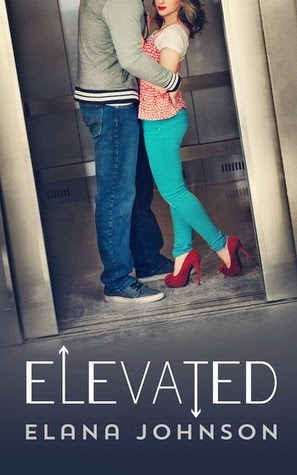
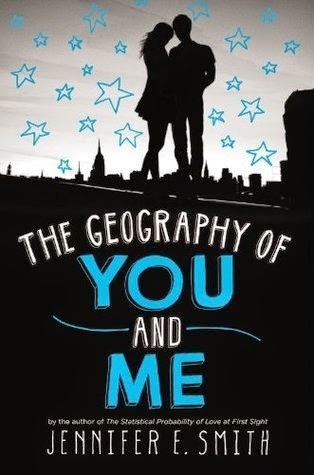
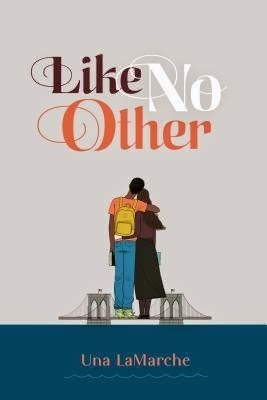
Elevated by Elana Johnson: The last person seventeen-year-old Eleanor Livingston wants to see on the elevator—let alone get stuck with—is her ex-boyfriend Travis, the guy she's been avoiding for five months. Plagued with the belief that when she speaks the truth, bad things happen, Elly hasn’t told Trav anything. Not why she broke up with him and cut off all contact. Not what happened the day her father returned from his deployment to Afghanistan. And certainly not that she misses him and still thinks about him everyday. But with nowhere to hide and Travis so close it hurts, Elly’s worried she won’t be able to contain her secrets for long. She’s terrified of finally revealing the truth, because she can’t bear to watch a tragedy befall the boy she still loves. (Description via Goodreads).
The Geography of You and Me by Jennifer E. Smith: Sparks fly when sixteen-year-old Lucy Patterson and seventeen-year-old Owen Buckley meet on an elevator rendered useless by a New York City blackout. Soon after, the two teenagers leave the city, but as they travel farther away from each other geographically, they stay connected emotionally, in this story set over the course of one year.
Like No Other by Una LaMarche (July 24): Devorah is a consummate good girl who has never challenged the ways of her strict Hasidic upbringing. Jaxon is a fun-loving, book-smart nerd who has never been comfortable around girls (unless you count his four younger sisters). They've spent their entire lives in Brooklyn, on opposite sides of the same street. Their paths never crossed . . . until one day, they did. When a hurricane strikes the Northeast, the pair becomes stranded in an elevator together, where fate leaves them no choice but to make an otherwise risky connection. Though their relation is strictly forbidden, Devorah and Jax arrange secret meetings and risk everything to be together. But how far can they go? Just how much are they willing to give up? (Description via Goodreads).
The Name Lucy
I think I've only ever known one person in my life named Lucy. But it appears Lucy is quite the name in YA this year. And it's not like it's only been this year, either -- Sara Zarr's The Lucy Variations, published in 2012, also featured a main character named Lucy.
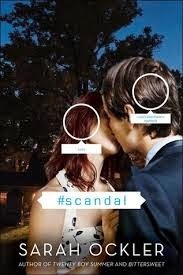
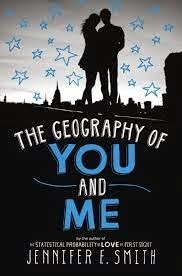
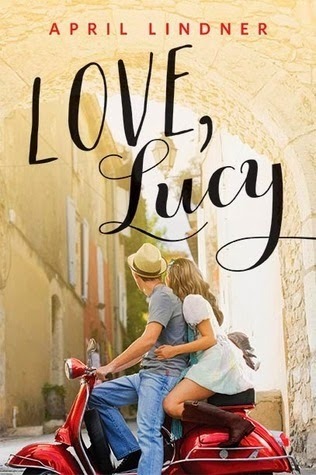
#Scandal by Sarah Ockler (June 17): When pictures of Lucy kissing her best friend's boyfriend emerge on the world of social media, she becomes a social pariah after the scandal rocks the school.
The Geography of You and Me by Jennifer E. Smith: Sparks fly when sixteen-year-old Lucy Patterson and seventeen-year-old Owen Buckley meet on an elevator rendered useless by a New York City blackout. Soon after, the two teenagers leave the city, but as they travel farther away from each other geographically, they stay connected emotionally, in this story set over the course of one year.
Love, Lucy by April Lindner (January 2015): While backpacking through Florence, Italy, during the summer before she heads off to college, 17-year-old Lucy Sommersworth finds herself falling in love with the culture, the architecture, the food...and Jesse Palladino, a handsome street musician. After a whirlwind romance, Lucy returns home, determined to move on from her "vacation flirtation." But just because summer is over doesn't mean Lucy and Jesse are over, too. Inspired by E.M. Forster's A Room with a View. (Description via Goodreads).



Chantress Alchemy by Amy Butler Greenfield (sequel to Chantress): Lucy, a chantress who works magic by singing, is called to court to find a lost instrument of Alchemy. But her magic isn't working properly.
In A Handful of Dust by Mindy McGinnis (September 23): In a barren land, teenage Lucy is taken away from the community she has grown up in and searches the vast countryside for a new home.
Sublime by Christina Lauren (October 14): Lucy and Colin discover they have a connection on the grounds of the private school they attend, but Lucy has a startling secret.


How to Meet Boys by Catherine Clark: Best friends Lucy and Mikayla are ready for the best summer of their lives, but when Mikayla falls for a boy from Lucy's past they realize their perfect summer might be over before it starts.
Quarantine: The Burnoutsby Lex Thomas (third in the "Quarantine" series): In this final installment of the Quarantine trilogy, David and Will are alive, but on the outside of McKinley High, while Lucy is the last of the trinity left inside to deal with Hilary, who will exact revenge before taking over McKinley High
The Nickname Noodle/s
It's been a slower reading year for me, but this one caught me because it's been in two books I've read this year: a character who has been nicknamed Noodle or Noodles.

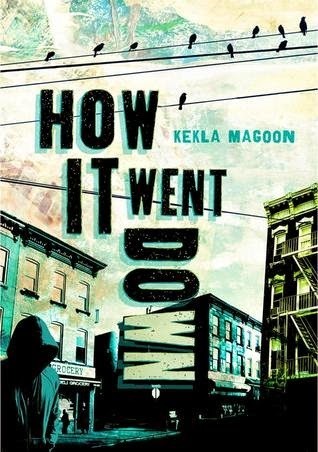
When I Was The Greatest by Jason Reynolds: Ali lives in Bed-Stuy, a Brooklyn neighborhood known for guns and drugs, but he and his sister, Jazz, and their neighbors, Needles and Noodles, stay out of trouble until they go to the wrong party, where one gets badly hurt and another leaves with a target on his back.
How It Went Down by Kekla Magoon (October 21): When sixteen-year-old Tariq Johnson dies from two gunshot wounds, his community is thrown into an uproar. Tariq was black. The shooter, Jack Franklin, is white. In the aftermath of Tariq's death, everyone has something to say, but no two accounts of the events line up. By the day, new twists and turns further obscure the truth. Tariq's friends, family, and community struggle to make sense of the tragedy, and of the hole left behind when a life is cut short. In their own words, they grapple for a way to say with certainty: This is how it went down. (Description via Goodreads).
Audrey Hepburn
A pair of books are coming out this year that are inspired by or feature Audrey Hepburn. Maybe she's this year's Jane Austen? Both titles are fiction.
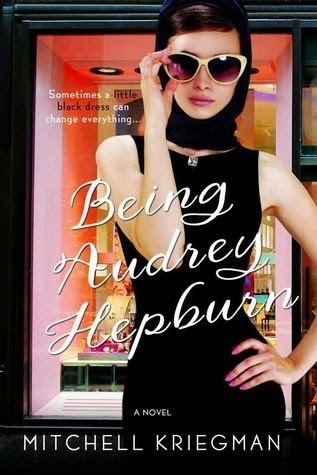
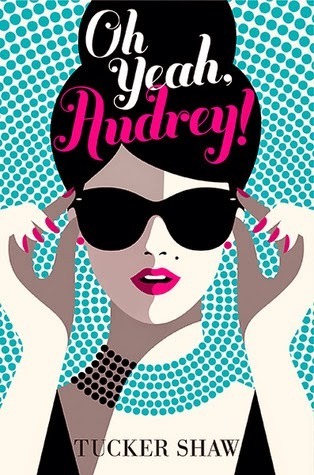
Being Audrey Hepburn by Mitchell Kriegman (September 16): Lisbeth comes from a broken home in the land of tube tops, heavy eyeliner, frosted lip-gloss, juiceheads, hoop earrings and “the shore.” She has a circle of friends who have dedicated their teenage lives to relieve the world of all its alcohol one drink at a time. Obsessed with everything Audrey Hepburn, Lisbeth is transformed when she secretly tries on Audrey’s iconic Givenchy. She becomes who she wants to be by pretending to be somebody she’s not and living among the young and privileged Manhattan elite. Soon she’s faced with choices that she would never imagine making – between who she’s become and who she once was.
Oh Yeah, Audrey! by Tucker Shaw (October 14): Months after the death of her mother, sixteen-year-old Gemma Beasley and friends she met through her Tumblr page meet in New York City to celebrate the life and style of Audrey Hepburn and her famous character, Holly Go Lightly.
Genies
The magical/mythical element of choice this year is the genie. I know very little about genies nor their historical and cultural contexts, so I can't say much to what it might mean, if anything. I just know it's an element of at least three books this year.


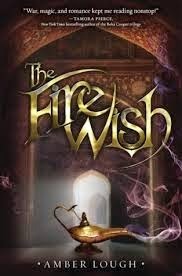
Exquisite Captive by Heather Demetrios (October 14): Nalia, a gorgeous, fierce eighteen-year-old jinni, is pitted against two magnetic adversaries, both of whom want her--and need her--to make a their wishes come true.
The Fire Artist by Daisy Whitney (October 14): As an elemental artist, Aria can create fire from her hands, stealing her power from lightning--which is dangerous and illegal in her world--but as her power begins to fade faster than she can steal it she must turn to a modern-day genie, a Granter, who offers one wish with an extremely high price.
The Fire Wish by Amber Lough (July 22): When a princess captures a jinn and makes a wish, she is transported to the fiery world of the jinn, while the jinn must take her place in the royal court of Baghdad.
Estate Sales
I can say I never knew anyone as a teen who went to estate sales. I also lived in the suburbs where there were no such things as estates to go to sales at. Garage sales? Sure. Rummaging? Sure. But estate sales? Not so much. But this year at least two YA novels feature the estate sale.


Everything Leads To You by Nina LaCour: While working as a film production designer in Los Angeles, Emi Price finds a mysterious letter from a silver screen legend which leads her to Ava, who is about to expand Emi's understanding of family, acceptance, and true romance.
To All The Boys I've Loved Before by Jenny Han: Lara Jean writes love letters to all the boys she has loved and then hides them in a hatbox until one day those letters are accidentally sent.
Perks of Being A Wallflower Comparisons
I'll do another round up of "meets" pitches in a future post, but I mentioned to a friend recently that I think comparisons to Stephen Chbosky's The Perks of Being A Wallflower will be the next trend after the comparisons to TFIOS and Eleanor & Park.
The comparisons or the note that the book would be ideal for fans of Perks come from Edelweiss descriptions. This is a small sampling of the titles I've seen with this comparison. I know there are others.




The Anatomy of a Misfit by Andrea Portes (September 2): Outside, Anika Dragomir is all lip gloss and blond hair—the third most popular girl in school. Inside, she’s a freak: a mix of dark thoughts, diabolical plots, and, if local chatter is to be believed, vampire DNA (after all, her father is Romanian). But she keeps it under wraps to maintain her social position. One step out of line and Becky Vilhauer, first most popular girl in school, will make her life hell. So when former loner Logan McDonough shows up one September hotter, smarter, and more mysterious than ever, Anika knows she can’t get involved. It would be insane to throw away her social safety for a nerd. So what if that nerd is now a black-leather-jacket-wearing dreamboat, and his loner status is clearly the result of his troubled home life? Who cares if the right girl could help him with all that, maybe even save him from it? Who needs him when Jared Kline, the bad boy every girl dreams of, is asking her on dates? Who? (Description via Goodreads).
Play Me Backwards by Adam Selzner (August 26): A promising and popular student in middle school, Leon Harris has become a committed "slacker" but with graduation approaching and his middle school girlfriend possibly returning to town, Leon's best friend Stan, who claims to be Satan, helps him get back on the right track--for a price.
Twerp by Mark Goldblatt (which is, interestingly, a middle grade book, not young adult): In Queens, New York, in 1969, twelve-year-old Julian Twerski writes a journal for his English teacher in which he explores his friendships and how they are affected by girls, a new student who may be as fast as Julian, and especially an incident of bullying.
Love Letters to the Dead by Ava Dellaira: When Laurel starts writing letters to dead people for a school assignment, she begins to spill about her sister's mysterious death, her mother's departure from the family, her new friends, and her first love.
Are there other microtrends you've noticed this year worth noting?






 Related StoriesWhat I'm Reading NowUnfinished Books, Part TwoA Million Little Followups (& A Thank You!)
Related StoriesWhat I'm Reading NowUnfinished Books, Part TwoA Million Little Followups (& A Thank You!)
Here's a look at a few microtrends I've noticed recently. Some of them have made me scratch my head and others aren't necessarily weird but interesting commonalities. I'm only looking at books published in 2014, and I'm positive I might miss additional titles that could fall into any of these mini trends, so if you can think of others published or publishing this year that fit, I'd love to know. All descriptions are from WorldCat unless otherwise noted.
Interestingly, some of these novels fit more than one microtrend.
Stuck In An Elevator
Elevator romances seem to be popping up. It's a trend I'm surprised hasn't been seen more frequently. In each of these books, it's a chance meeting in an elevator that allows a pair of characters to develop a relationship that may have otherwise never happened.



Elevated by Elana Johnson: The last person seventeen-year-old Eleanor Livingston wants to see on the elevator—let alone get stuck with—is her ex-boyfriend Travis, the guy she's been avoiding for five months. Plagued with the belief that when she speaks the truth, bad things happen, Elly hasn’t told Trav anything. Not why she broke up with him and cut off all contact. Not what happened the day her father returned from his deployment to Afghanistan. And certainly not that she misses him and still thinks about him everyday. But with nowhere to hide and Travis so close it hurts, Elly’s worried she won’t be able to contain her secrets for long. She’s terrified of finally revealing the truth, because she can’t bear to watch a tragedy befall the boy she still loves. (Description via Goodreads).
The Geography of You and Me by Jennifer E. Smith: Sparks fly when sixteen-year-old Lucy Patterson and seventeen-year-old Owen Buckley meet on an elevator rendered useless by a New York City blackout. Soon after, the two teenagers leave the city, but as they travel farther away from each other geographically, they stay connected emotionally, in this story set over the course of one year.
Like No Other by Una LaMarche (July 24): Devorah is a consummate good girl who has never challenged the ways of her strict Hasidic upbringing. Jaxon is a fun-loving, book-smart nerd who has never been comfortable around girls (unless you count his four younger sisters). They've spent their entire lives in Brooklyn, on opposite sides of the same street. Their paths never crossed . . . until one day, they did. When a hurricane strikes the Northeast, the pair becomes stranded in an elevator together, where fate leaves them no choice but to make an otherwise risky connection. Though their relation is strictly forbidden, Devorah and Jax arrange secret meetings and risk everything to be together. But how far can they go? Just how much are they willing to give up? (Description via Goodreads).
The Name Lucy
I think I've only ever known one person in my life named Lucy. But it appears Lucy is quite the name in YA this year. And it's not like it's only been this year, either -- Sara Zarr's The Lucy Variations, published in 2012, also featured a main character named Lucy.



#Scandal by Sarah Ockler (June 17): When pictures of Lucy kissing her best friend's boyfriend emerge on the world of social media, she becomes a social pariah after the scandal rocks the school.
The Geography of You and Me by Jennifer E. Smith: Sparks fly when sixteen-year-old Lucy Patterson and seventeen-year-old Owen Buckley meet on an elevator rendered useless by a New York City blackout. Soon after, the two teenagers leave the city, but as they travel farther away from each other geographically, they stay connected emotionally, in this story set over the course of one year.
Love, Lucy by April Lindner (January 2015): While backpacking through Florence, Italy, during the summer before she heads off to college, 17-year-old Lucy Sommersworth finds herself falling in love with the culture, the architecture, the food...and Jesse Palladino, a handsome street musician. After a whirlwind romance, Lucy returns home, determined to move on from her "vacation flirtation." But just because summer is over doesn't mean Lucy and Jesse are over, too. Inspired by E.M. Forster's A Room with a View. (Description via Goodreads).



Chantress Alchemy by Amy Butler Greenfield (sequel to Chantress): Lucy, a chantress who works magic by singing, is called to court to find a lost instrument of Alchemy. But her magic isn't working properly.
In A Handful of Dust by Mindy McGinnis (September 23): In a barren land, teenage Lucy is taken away from the community she has grown up in and searches the vast countryside for a new home.
Sublime by Christina Lauren (October 14): Lucy and Colin discover they have a connection on the grounds of the private school they attend, but Lucy has a startling secret.


How to Meet Boys by Catherine Clark: Best friends Lucy and Mikayla are ready for the best summer of their lives, but when Mikayla falls for a boy from Lucy's past they realize their perfect summer might be over before it starts.
Quarantine: The Burnoutsby Lex Thomas (third in the "Quarantine" series): In this final installment of the Quarantine trilogy, David and Will are alive, but on the outside of McKinley High, while Lucy is the last of the trinity left inside to deal with Hilary, who will exact revenge before taking over McKinley High
The Nickname Noodle/s
It's been a slower reading year for me, but this one caught me because it's been in two books I've read this year: a character who has been nicknamed Noodle or Noodles.


When I Was The Greatest by Jason Reynolds: Ali lives in Bed-Stuy, a Brooklyn neighborhood known for guns and drugs, but he and his sister, Jazz, and their neighbors, Needles and Noodles, stay out of trouble until they go to the wrong party, where one gets badly hurt and another leaves with a target on his back.
How It Went Down by Kekla Magoon (October 21): When sixteen-year-old Tariq Johnson dies from two gunshot wounds, his community is thrown into an uproar. Tariq was black. The shooter, Jack Franklin, is white. In the aftermath of Tariq's death, everyone has something to say, but no two accounts of the events line up. By the day, new twists and turns further obscure the truth. Tariq's friends, family, and community struggle to make sense of the tragedy, and of the hole left behind when a life is cut short. In their own words, they grapple for a way to say with certainty: This is how it went down. (Description via Goodreads).
Audrey Hepburn
A pair of books are coming out this year that are inspired by or feature Audrey Hepburn. Maybe she's this year's Jane Austen? Both titles are fiction.


Being Audrey Hepburn by Mitchell Kriegman (September 16): Lisbeth comes from a broken home in the land of tube tops, heavy eyeliner, frosted lip-gloss, juiceheads, hoop earrings and “the shore.” She has a circle of friends who have dedicated their teenage lives to relieve the world of all its alcohol one drink at a time. Obsessed with everything Audrey Hepburn, Lisbeth is transformed when she secretly tries on Audrey’s iconic Givenchy. She becomes who she wants to be by pretending to be somebody she’s not and living among the young and privileged Manhattan elite. Soon she’s faced with choices that she would never imagine making – between who she’s become and who she once was.
Oh Yeah, Audrey! by Tucker Shaw (October 14): Months after the death of her mother, sixteen-year-old Gemma Beasley and friends she met through her Tumblr page meet in New York City to celebrate the life and style of Audrey Hepburn and her famous character, Holly Go Lightly.
Genies
The magical/mythical element of choice this year is the genie. I know very little about genies nor their historical and cultural contexts, so I can't say much to what it might mean, if anything. I just know it's an element of at least three books this year.



Exquisite Captive by Heather Demetrios (October 14): Nalia, a gorgeous, fierce eighteen-year-old jinni, is pitted against two magnetic adversaries, both of whom want her--and need her--to make a their wishes come true.
The Fire Artist by Daisy Whitney (October 14): As an elemental artist, Aria can create fire from her hands, stealing her power from lightning--which is dangerous and illegal in her world--but as her power begins to fade faster than she can steal it she must turn to a modern-day genie, a Granter, who offers one wish with an extremely high price.
The Fire Wish by Amber Lough (July 22): When a princess captures a jinn and makes a wish, she is transported to the fiery world of the jinn, while the jinn must take her place in the royal court of Baghdad.
Estate Sales
I can say I never knew anyone as a teen who went to estate sales. I also lived in the suburbs where there were no such things as estates to go to sales at. Garage sales? Sure. Rummaging? Sure. But estate sales? Not so much. But this year at least two YA novels feature the estate sale.


Everything Leads To You by Nina LaCour: While working as a film production designer in Los Angeles, Emi Price finds a mysterious letter from a silver screen legend which leads her to Ava, who is about to expand Emi's understanding of family, acceptance, and true romance.
To All The Boys I've Loved Before by Jenny Han: Lara Jean writes love letters to all the boys she has loved and then hides them in a hatbox until one day those letters are accidentally sent.
Perks of Being A Wallflower Comparisons
I'll do another round up of "meets" pitches in a future post, but I mentioned to a friend recently that I think comparisons to Stephen Chbosky's The Perks of Being A Wallflower will be the next trend after the comparisons to TFIOS and Eleanor & Park.
The comparisons or the note that the book would be ideal for fans of Perks come from Edelweiss descriptions. This is a small sampling of the titles I've seen with this comparison. I know there are others.




The Anatomy of a Misfit by Andrea Portes (September 2): Outside, Anika Dragomir is all lip gloss and blond hair—the third most popular girl in school. Inside, she’s a freak: a mix of dark thoughts, diabolical plots, and, if local chatter is to be believed, vampire DNA (after all, her father is Romanian). But she keeps it under wraps to maintain her social position. One step out of line and Becky Vilhauer, first most popular girl in school, will make her life hell. So when former loner Logan McDonough shows up one September hotter, smarter, and more mysterious than ever, Anika knows she can’t get involved. It would be insane to throw away her social safety for a nerd. So what if that nerd is now a black-leather-jacket-wearing dreamboat, and his loner status is clearly the result of his troubled home life? Who cares if the right girl could help him with all that, maybe even save him from it? Who needs him when Jared Kline, the bad boy every girl dreams of, is asking her on dates? Who? (Description via Goodreads).
Play Me Backwards by Adam Selzner (August 26): A promising and popular student in middle school, Leon Harris has become a committed "slacker" but with graduation approaching and his middle school girlfriend possibly returning to town, Leon's best friend Stan, who claims to be Satan, helps him get back on the right track--for a price.
Twerp by Mark Goldblatt (which is, interestingly, a middle grade book, not young adult): In Queens, New York, in 1969, twelve-year-old Julian Twerski writes a journal for his English teacher in which he explores his friendships and how they are affected by girls, a new student who may be as fast as Julian, and especially an incident of bullying.
Love Letters to the Dead by Ava Dellaira: When Laurel starts writing letters to dead people for a school assignment, she begins to spill about her sister's mysterious death, her mother's departure from the family, her new friends, and her first love.
Are there other microtrends you've noticed this year worth noting?







 Related StoriesWhat I'm Reading NowUnfinished Books, Part TwoA Million Little Followups (& A Thank You!)
Related StoriesWhat I'm Reading NowUnfinished Books, Part TwoA Million Little Followups (& A Thank You!)
Published on June 12, 2014 22:00
June 11, 2014
What I'm Reading Now
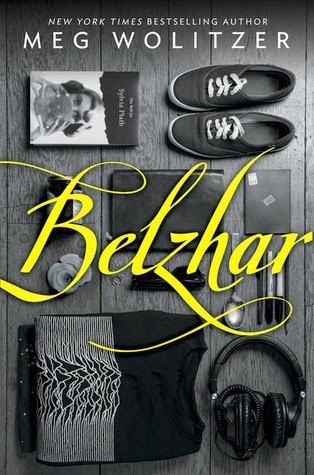

Belzhar by Meg Wolitzer
This one could easily be added to our magical realism genre guide. Jam’s boyfriend Reeve died, and she’s been sent to a boarding school for “fragile and intelligent” teenagers because she’s having trouble dealing with the trauma. (Essentially, she’s depressed.) She’s assigned to a Special Topics in English class where the students read Sylvia Plath exclusively, including her semi-autobiographical novel The Bell Jar. Twice a week, they’re required to write in a journal about anything they like. When they do, they discover the journal takes them to a place in their lives prior to the trauma they’ve experienced. This is Wolitzer’s first YA novel, and it’s smoothly written, mostly avoiding the writing-down-to-its-audience plague that afflicts a lot of adult writers. It’s not my usual cup of tea, but I liked it a lot. I’ll have a fuller review closer to the publication date.
Conversion by Katherine Howe
This is a stunner. I’m only halfway through and I’m pretty impressed by almost everything about this book. Howe has taken the case of the high school girls and one boy in Le Roy, NY, who were diagnosed with conversion disorder in 2011-2012 and set it in a private girls’ school in Massachusetts. She has then drawn a parallel between this case and that of the Salem witch hysteria in the 17th century, coincidentally set in the same physical location. The book alternates between Colleen Rowley’s story in 2012 and Ann Putnam’s confession in the early 1700s (the only participant to confess, incidentally), though the bulk of the book focuses on Colleen. Interwoven through both stories are themes of academic and societal pressure on teen girls, the close policing of teen girls’ sexuality, and what it takes for teen girls to be seen for their authentic selves and heard in their own voices. This is the second novel (that I know of) to use the Le Roy case as inspiration – Kelly wrote about the other, Megan Abbott’s The Fever , on Tuesday – though Howe’s book is marketed specifically for teens. This is a well-crafted novel that juggles many different parts successfully.
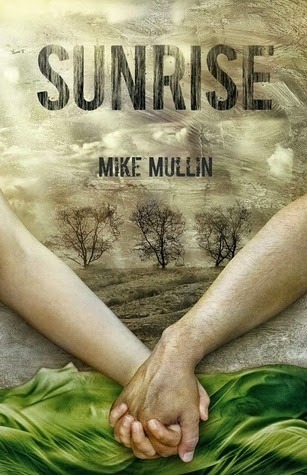
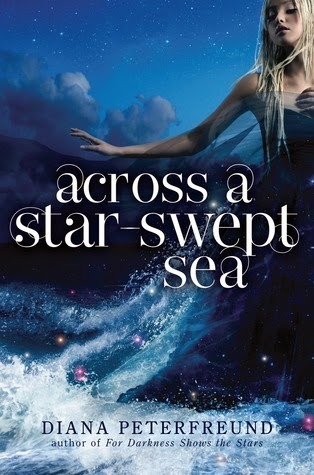
Sunrise by Mike Mullin
I started this a few weeks ago and it’s been a bit of a struggle for me. It’s the conclusion to a trilogy that began with Ashfall and continued with Ashen Winter . This volume focuses, at least initially, on a war of sorts between two communities post-supervolcano. One of them is the community Alex lives in, and the other is a community that attacked them and stole most of their food and supplies. Alex grows into his role as a leader by organizing a raid/attack on the town to regain their food, essential to their continued survival. I think I’m having a hard time getting into it because it’s so bleak. Right off the bat, there’s a large amount of violence and loss, and I’m in the mood for something a little lighter, perhaps.
Across a Star-Swept Sea by Diana Peterfreund
I loved For Darkness Shows the Stars , the first book set in this universe, so this was a natural pick for me. Where the first was a re-telling of Persuasion, this one is a re-telling of the Scarlet Pimpernel, set on two islands in the Pacific Ocean post-Reduction. I’m not as familiar with the Scarlet Pimpernel as I am with Persuasion, but so far it hasn’t infringed upon my enjoyment. These books aren’t fast reads for me; they’re books to fall into and savor slowly. Part of what I loved so much about FDStS was the yearning between the two leads. In Across a Star-Swept Sea, we trade in the intense romance for espionage and derring-do. Not a bad trade, but it does mean the book doesn’t feel as emotionally resonant (at least so far).







 Related StoriesUnfinished Books, Part TwoA Million Little Followups (& A Thank You!)"Summer" Reads, 2014 Edition
Related StoriesUnfinished Books, Part TwoA Million Little Followups (& A Thank You!)"Summer" Reads, 2014 Edition
Published on June 11, 2014 22:00
June 10, 2014
Unfinished Books, Part Two
A few more books I couldn't finish. Read part one here.
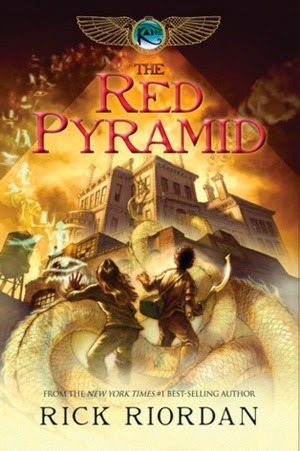
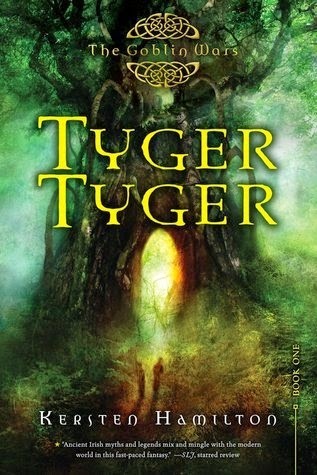
The Red Pyramid by Rick Riordan
I started listening to the audio and got to disc seven before I gave up. I found the writing to be very sloppy - repetitive with unnecessary dialogue. There were a lot of moments where the characters recapped what just happened (in a super! excited! voice!) and it made the story drag. I remembered, I didn't need the refresher. Katherine Kellgren's normally excellent narration actually made it worse for me, since it heightened the repetitive nature of the text.
Tyger Tyger by Kersten Hamilton
I think the only reason I brought this book home from the library was because of its pretty green cover. Turns out paranormal stories about goblins aren't really my thing. I never thought they were, but hey. It was worth a shot.
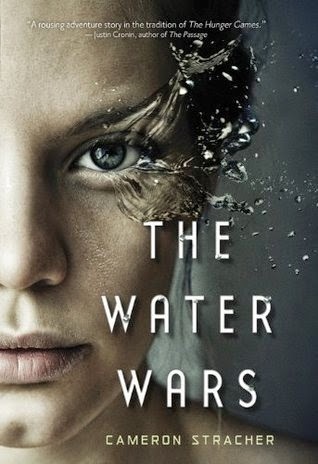

The Water Wars by Cameron Stracher
This is a dystopia about a future where water is scarce and strictly regulated. It practically had my name written all over it, but I found it boring. I gave it 50 pages or so and then gave up.
Dark Mirror by M. J. Putney
This is a historical fantasy (set in two time periods!) that sounds really cool and like it would be right up my alley. Alas, it never grabbed me. Perhaps things didn't move quickly enough for me.
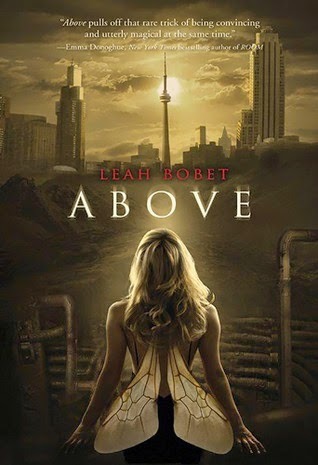
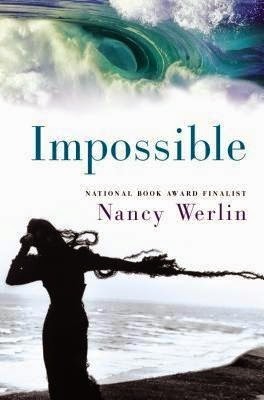
Above by Leah Bobet
This is a weird book, and weird books are very hit and miss for me. Ultimately, I didn't have the patience to learn the jargon and the specifics of the world-building, despite the intriguing premise (a group of humans with special powers/mutations live underground, survivors of some sort of apocalyptic event above).
Impossible by Nancy Werlin
I had strong, very negative feelings about this book, which many of my acquaintances rather enjoyed. There was a lot wrong with it, to the point where I wasn't just bored, I was kind of upset by it. Ultimately, I didn't believe in the characters' actions and most of the good stuff happened off the page.
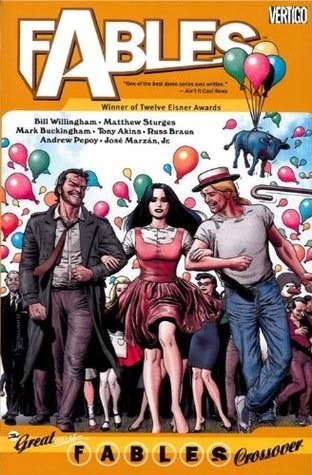

The Great Fables Crossover by Bill Willingham
This is a crossover with Fables and Jack of Fables. It's also where I learned I loathed Jack of Fables.
Gone Girl by Gillian Flynn
The problem with this wasn't that it wasn't any good - it was actually too good. Flynn did such a great job of portraying a toxic marriage that it left a bad taste in my mouth and I couldn't continue after I read the first big twist.







 Related StoriesA Million Little Followups (& A Thank You!)"Summer" Reads, 2014 EditionFour Short(er) Contemporary YA Reviews: Jennifer Brown, Katrina Leno, Steve Brezenoff, and Amanda Maciel
Related StoriesA Million Little Followups (& A Thank You!)"Summer" Reads, 2014 EditionFour Short(er) Contemporary YA Reviews: Jennifer Brown, Katrina Leno, Steve Brezenoff, and Amanda Maciel


The Red Pyramid by Rick Riordan
I started listening to the audio and got to disc seven before I gave up. I found the writing to be very sloppy - repetitive with unnecessary dialogue. There were a lot of moments where the characters recapped what just happened (in a super! excited! voice!) and it made the story drag. I remembered, I didn't need the refresher. Katherine Kellgren's normally excellent narration actually made it worse for me, since it heightened the repetitive nature of the text.
Tyger Tyger by Kersten Hamilton
I think the only reason I brought this book home from the library was because of its pretty green cover. Turns out paranormal stories about goblins aren't really my thing. I never thought they were, but hey. It was worth a shot.


The Water Wars by Cameron Stracher
This is a dystopia about a future where water is scarce and strictly regulated. It practically had my name written all over it, but I found it boring. I gave it 50 pages or so and then gave up.
Dark Mirror by M. J. Putney
This is a historical fantasy (set in two time periods!) that sounds really cool and like it would be right up my alley. Alas, it never grabbed me. Perhaps things didn't move quickly enough for me.


Above by Leah Bobet
This is a weird book, and weird books are very hit and miss for me. Ultimately, I didn't have the patience to learn the jargon and the specifics of the world-building, despite the intriguing premise (a group of humans with special powers/mutations live underground, survivors of some sort of apocalyptic event above).
Impossible by Nancy Werlin
I had strong, very negative feelings about this book, which many of my acquaintances rather enjoyed. There was a lot wrong with it, to the point where I wasn't just bored, I was kind of upset by it. Ultimately, I didn't believe in the characters' actions and most of the good stuff happened off the page.


The Great Fables Crossover by Bill Willingham
This is a crossover with Fables and Jack of Fables. It's also where I learned I loathed Jack of Fables.
Gone Girl by Gillian Flynn
The problem with this wasn't that it wasn't any good - it was actually too good. Flynn did such a great job of portraying a toxic marriage that it left a bad taste in my mouth and I couldn't continue after I read the first big twist.







 Related StoriesA Million Little Followups (& A Thank You!)"Summer" Reads, 2014 EditionFour Short(er) Contemporary YA Reviews: Jennifer Brown, Katrina Leno, Steve Brezenoff, and Amanda Maciel
Related StoriesA Million Little Followups (& A Thank You!)"Summer" Reads, 2014 EditionFour Short(er) Contemporary YA Reviews: Jennifer Brown, Katrina Leno, Steve Brezenoff, and Amanda Maciel
Published on June 10, 2014 22:00
Circulating Ideas Interview & Excerpt from "It Happens"

I'm excited to share the podcast I did with Steve Thomas at Circulating Ideas, which is up now for you to enjoy. We talk about my book, about contemporary realistic fiction, about diversity, and about what makes for good book talking. You can hear it here.
Until the book is up at Amazon/B&N (and I noted yesterday, for people who buy through library vendors like Baker & Taylor and Ingram, you can preorder it now), I won't talk much more about it. But because I have been talking around the book and have shared the cover, I thought maybe it would be worthwhile to put together a small excerpt from the book to show what it looks like inside.
This excerpt is from the unedited proof, so there may be some minor errors in it. I've pulled a passage from Part 1, a section of Part 2, and a section of Part 3, to give a taste of what the entire thing looks like.
Kelly Jensen It Happens (excerpt)
If you can't read the embedded file, you can access it here.







 Related StoriesA Million Little Followups (& A Thank You!)It Happens: A Guide to Contemporary Realistic Fiction for the YA ReaderContemporary YA Week Wrap Up -- And A Bit About Kelly's Book
Related StoriesA Million Little Followups (& A Thank You!)It Happens: A Guide to Contemporary Realistic Fiction for the YA ReaderContemporary YA Week Wrap Up -- And A Bit About Kelly's Book
Published on June 10, 2014 06:04
June 9, 2014
The Fever by Megan Abbott
 It opens with girls going behind a screen.
It opens with girls going behind a screen.A quick prick.
Then they're done.
A few minutes of discomfort for the injection and a lifetime of sound minds about the chances of ever getting HPV. It's a new requirement now for girls to be vaccinated. To be protected. "Just in cast," of course. It's a safe thing and it's the right thing to do.
Deenie, Lise, and Gabby have been friends for a long time. High school hasn't changed their friendship, though they've all developed other friendships along the way. They've shared secrets and crushes and moments doing things that perhaps they shouldn't. Like visiting the local lake, closed to visitors because of the mysterious fungus pooling atop of it.
All three got the vaccine, of course.
It's when Lise's body begins to contort and she experiences something like a grand mal seizure in the middle of class that the limits of their friendship are tested. The people in class -- including Deenie -- are horrified by what they're witnessing. Even when she's taken out of the classroom, to the nurse, then on to the hospital later in the day, everyone is rattled. Deenie wants to get away, to go see her best friend. Deenie's brother, keen on what happened, wants to get out of school too. And their father Tom, a teacher at the high school, knows that this is the moment when everything changes. Again.
But Megan Abbott's The Fever doesn't stop there. This isn't only about Lise's seizure. Or her time in the hospital. Or the fact no one can get answers about what happened to her.
It spreads.
Before long, more girls are having ticks. They're having seizures or blacking out or acting in ways that are anything but ordinary. Gabby experiences it, as do a number of other girls. All girls. Deenie never does, though. But Deenie did see what Lise looked like when she was in that coma unconscious. It's an image forever burned in her brain.
When the school loses its mind over the unexplained madness, it only gets worse when adults in this town get involved.
First the fingers are pointed at the vaccine. The vaccine meant to protect their little girls has turned on those very same girls. Their bodies too young, too inexperienced, too virginal to respond appropriately to such a grown up thing. To even think about such a grown up thing.
One girl who gets the fever, though, never got the vaccine. Busted theory? Not so much. The lengths some adults want to go to convince everyone it's the vaccine, regardless, are impressive and frightening.
Deenie is convinced it must be the lake, though. The lake that's off limits. The lake that, just days before, she and Lise and Gabby and Gabby's tight friend Skye all dipped into. But why isn't she sick then? Why isn't Skye sick? How come Gabby's illness was only short lived, not as debilitating as Lise's? Deenie's terrified she's going to have to speak up about it, which will also mean potentially fessing up to the other thing that happened recently: she lost her virginity to one of her coworkers. She doesn't want people to know, but she wants everyone to know. Just not this way. Because the thing is, Deenie's first time wasn't planned, but done after she learned about Lise's experience with....well, let's just say they shared a lot of things as best friends.
The pieces aren't connecting. The stories aren't adding up.
If Megan Abbott's book sounds like it was ripped from the headlines of a story making waves in Le Roy, New York, you'd be right. She as much as notes that as one of her inspirations on her website. But The Fever isn't about the headlines. It's about what happens beneath the headlines, what it is that people won't talk about because those things they won't talk about are the very things they should be talking about.
The Fever is a story about the fear people have about teen girls. About the mythologies adults build about girls who are emerging: in their friendships, in their relationships with people outside their families, in their sexuality. Of course the cause of the illness going around has to do with a vaccine which rips away the innocence of little girls when they're too young. Of course there's something noteworthy in the fact it is only girls who experienced this strangeness.
There's more to that though. Abbott weaves in really fascinating threads about girls finding their first boyfriends. About admitting to their long-time crushes. About what happens when girls go to desperate lengths to be noticed and when they get the help of other girls to do those very things. About why it is boys are never to blame, never the ones who should be questioned or educated about what roles they play in anything. About how boys get off the hook so easily.
Girl friendships are at the forefront of this story, and those girl friendships are what ties so many of the threads together. Those friendships are part of a mythology, and those girls as group are rarely seen as individuals.
Because when it comes to what caused Lise's coma being unconscious, when the truth unravels, one girl is put to blame. But it's another girl who will suffer for it. Rather than this being a crime with a criminal to point to, though, the story is about "the girls" collective. About girls who get together and do bad things as a unit. Who are scheming, desirous. Who tempt boys with things -- and who are desperate enough to garner the attention of boys that they'll go to lengths at the end of the world to do so.
There is a boy at the center of this. And he's a boy who is likable, well-depicted, even, perhaps, all-American. There's absolutely nothing wrong with him at all, and in fact, he's the one who figures out the secrets behind a lot of what was happening with the girls. He doesn't come forward, though, and no one asks him to put himself out there in the same way that these girls are spotlighted, hounded, and made to look a million different shades of bad by those around them. He's not blameworthy -- he's a good character and he's been put in a terrible position. But the point Abbott raises here is precisely that: why is an innocent boy let off the hook when a number of innocent girls are instead shamed and embarrassed in front of their community? Because it's the innocence of girls that needs to be protected and discussed. The innocence of boys, though.
That isn't the same thing.
The explanation for what's going on is primarily conversion disorder, and I don't think that's a spoiler. What set off the disorder was Lise's seizure in class, which had a very root cause. And that cause lays at the hands of one of the girls who went to the lake. Who felt like Lise was a threat and a bit of a braggart about what happened to her recently.
Though the primary focus of gender and gender politics lies in the teen girls, there is much to be dug out about those same discussions when it comes to adults, too. The community makes an accusation at one point that part of what was causing a problem in the town was that there weren't enough good men around to be guideposts for these girls. That the girls who suffered from the fever were also girls who didn't have good fathers or whose parents had very messed up relationships.
Which explained why Deenie did not experience any symptoms -- dad is in her life.
The Fever is a complex, compelling thriller for adult readers which immense appeal for teen readers. It's written in third person, and it alternates viewpoints between Deenie, her father, and her brother. There's a fascinating family dynamic among them, particularly when it comes to their mother. The writing itself is tight and pretty sparse. This one doesn't linger; it pulses forward. The energy and intensity are palpable, and because each word matters, within each word is something deeper to mine. The Fever is less about the answer to what is happening and more about questioning why things are happening. It's unflinching and at times tough to read, particularly as we watch the actual innocence of teen girls ram up against what adults consider the innocence of teen girls. When we hear Lise talk about the first time a boy goes down on her and how it felt to her and what she experienced then we hear adults talk about how girls shouldn't be vaccinated because no way, no how would their girls ever be sexual beings. It's uncomfortable and unsettling, and being able to see the story from all angles is what makes those powerful messages about girls and girlhood stand out.
This was my second Abbott book, after Dare Me, and I think I liked this one even more.
Pass The Fever off to readers who love stories that are playing out in the world right now. Pass it off to readers -- teens or adults -- who want a fast-paced thriller that's got a literary bent. There's so much to parse out in this read that it's easily one readers will finish and want to flip back and revisit to tease out even more. This is an excellent crossover read.
Review copy received from the publisher. The Fever will be available from Little, Brown June 17.







 Related StoriesFour Short(er) Contemporary YA Reviews: Jennifer Brown, Katrina Leno, Steve Brezenoff, and Amanda MacielThe Klaatu Terminus by Pete HautmanA Million Little Followups (& A Thank You!)
Related StoriesFour Short(er) Contemporary YA Reviews: Jennifer Brown, Katrina Leno, Steve Brezenoff, and Amanda MacielThe Klaatu Terminus by Pete HautmanA Million Little Followups (& A Thank You!)
Published on June 09, 2014 22:00



